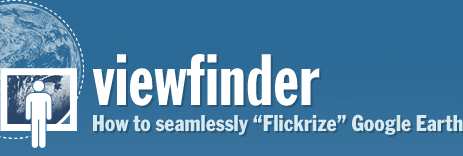The Vision
There is something almost cosmic about flying around in Google Earth. It allows world travel at lightning speed. It cultivates a sense of global awareness on a visceral level. And it places you in a reference frame akin to astral projection, ultimately altering your perception of the planet, and of yourself.
There is something equally significant about Yahoo Flickr, albeit on a folksier, more grounded plane. Simply providing people with a means to share their photographs has resulted in a library of over 2 billion images. These photos are tagged and organized in an organic, ad hoc, bottom-up manner, often referred to as a “folksonomy.” Community-based tagging allows new and often idiosyncratic cross-cuts through the database – through tags such as “cats in sinks,” “scattered images,” and “blue,” for example – and while these may seem trivial to outsiders, the tags are pertinent and highly significant to the communities from which they emerge.
“Geotagged” photos, geographically indexed on a world map, either manually or via GPS, are an increasingly popular phenomenon. However, current implementations treat maps, and particularly 3D models, in fundamentally different modalities than photographs. The result is that photos tend to hover like playing cards, seemingly suspended over the world, remaining 2D objects in a 3D environment, and negating the transformative experience that we think should occur when combining images and a 3D world.
We can do better. We believe we can craft an experience that is as visceral as Google Earth and as accessible as Flickr by integrating photos into corresponding 3D models (such as Google Earth) so that they appear as perfectly aligned overlays; this could be called “situated,” “dimensionalized” or “seamless” alignment. Using appropriate interactive methods that combine human and machine intelligence, we believe that it will be possible to open up the process to geo-locate any and all photos that correspond to real-world places.


